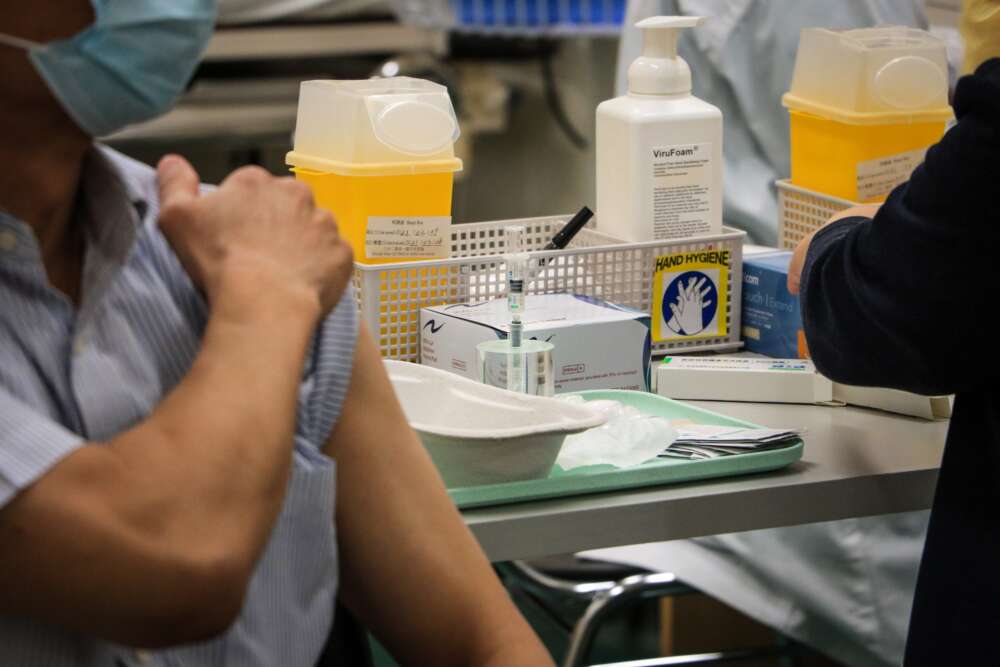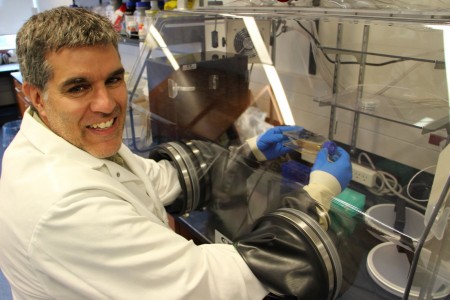
This article is republished from The Conversation under a Creative Commons licence. Read the original article.
As a viral immunologist who develops immunization strategies to prevent infectious diseases and treat cancers, I would like to highlight outstanding questions about the emergency use of vaccines against SARS-CoV-2, the coronavirus that causes COVID-19.
These vaccines have raised hopes that the pandemic is nearing an end. Hopefully this is true, but here are some potential sticking points.

1. Long-term safety profile of COVID-19 vaccines
Because COVID-19 vaccines have received regulatory approval in record-shattering time, these vaccines are being distributed with uniquely short safety profiles: only months’ worth of data are available.
Short-term safety of approved COVID-19 vaccines looks good. However, induction of anaphylactic reactions in some vaccine recipients hasn’t helped the optics for those with vaccine hesitancy. But these cases are rare and usually associated with pre-existing severe allergies.
Twenty-three frail elderly individuals in Norway died shortly after receiving the Pfizer vaccine. It is difficult to ascertain the reason for these deaths and they may have had nothing to do with the vaccine. It has put pressure on physicians in that country to try to determine which members of this demographic at high risk for COVID-19 mortality should and should not be vaccinated.
If too many unpredicted severe long-term side-effects were to accrue over time, this could be cause for withdrawal of approval for a vaccine.
2. Duration of immunity of COVID-19 vaccines
Duration of immunity refers to how long a person is protected after being vaccinated. For previous vaccines, we could have reasonable confidence that immunity would last at least a few years prior to public rollouts. COVID-19 vaccines only have a few months’ worth of data on duration of immunity.
If immunity declines before “herd immunity” is achieved, previously vaccinated individuals will become susceptible to infection again and the rollout could fail.
3. Effectiveness of COVID-19 vaccines
There were public declarations of greater than 90 per cent effectiveness for the Moderna and Pfizer vaccines. Unfortunately, Pfizer did not publicly disclose the fact that there were large numbers of suspected, but unconfirmed cases of COVID-19 that were excluded from their calculation of efficacy. This was revealed in a summary report issued by the United States Food and Drug Administration (FDA).
Re-analysis of the data with this new information accounted for was performed by the associate editor of the British Medical Journal, who reported his non-peer-reviewed findings in the journal’s opinion column. His estimate suggests the true effectiveness of the vaccine might be as low as 19 to 29 per cent. This can’t be confirmed or refuted until raw data not included in the FDA report are released.
The effectiveness reported for Sinovac Biotech’s currently unapproved vaccine dropped from 78 per cent early in a clinical trial being run in Brazil to 50.38 per cent in the late stages of the trial. The cut-off for approval of COVID-19 vaccines has been set at 50 per cent effectiveness. If efficacy during public rollouts ends up being less than “advertised,” COVID-19 vaccines will under-perform relative to expectations.
4. Risk of variants that can evade vaccine-induced immunity
Several novel variants of SARS-CoV-2 have been identified recently. Coronaviruses copy their genetic material in a way that inherently induces random mutations. If these mutations promote survival of the virus in vaccinated people, it could spell disaster for the current immunization strategy.
Although the risk of mutations that can evade vaccine-induced immunity cannot be accurately quantified, the way COVID-19 vaccines are being rolled out will likely increase the potential for this to occur for at least two reasons. First, the current vaccines confer narrowly focused immunity that targets a single viral spike protein. That means SARS-CoV-2 only needs to mutate one protein to evade vaccine-induced immunity. In contrast, it would be more difficult for the virus if it had to mutate several proteins to become immune-evasive.
Secondly, the vaccination program is being rolled out in piece-meal fashion. This slow expansion of narrowly focused immunity among people who are surrounded by others who are not immune provides the time and contact with a “reservoir population” that a virus would need to generate random variants that can probe their potential to infect vaccinated people.
If a variant emerges that has altered its spike protein enough to bypass vaccine-induced immunity, the vaccine rollout could fail. If this happens, vaccines may need to be re-engineered to express a novel version of the spike protein, preferably with other proteins added to broaden immunity.
Importantly, acquisition of natural immunity, which targets multiple components of the virus, may reduce the risk of re-infection with variants that can bypass spike protein-specific immunity.
5. Untested COVID-19 vaccine regimens
Due to logistical challenges of rolling out two-shot vaccines and with the goal of maximizing how many and how quickly people can be vaccinated, single-dose regimens, combining vaccines from different manufacturers, and regimens that alter the intervals between doses are all being considered.
Note that the efficacy of Pfizer’s and Moderna’s vaccines only holds true beginning one to two weeks after the second shot, and using the recommended interval and dose. The performance of vaccines cannot be guaranteed if administered differently than the way in which they obtained regulatory approval. Indeed, results of a single-dose regimen with the Pfizer vaccine in Israel were reported as disappointing, although this is being debated.
The overall magnitude and/or quality of immune responses could be compromised by lengthening the interval between the two doses. Deviations in protocols should not be tolerated unless backed up by clinical trial data.
Herd immunity without rollout success?
Can herd immunity still be achieved if COVID-19 vaccines underperform? Probably. Mounting evidence suggests most people that have been infected with SARS-CoV-2 have naturally acquired immunity that can protect them from re-infection. In fact, we have much longer duration data for naturally acquired immunity than for vaccine-induced immunity against SARS-CoV-2.
There is even evidence that pre-existing immunity against other coronaviruses, including those that merely cause colds, can cross-protect some people against SARS-CoV-2. This is not surprising because this is what our immune system is designed to do. All these people will contribute to the acquisition of herd immunity.
At the beginning of the pandemic most governments decided against using naturally acquired immunity as a primary way to achieve herd immunity to allow hospitals time to deal with severe illnesses. However, one year into the pandemic a huge unanswered question is: how close/far are we from natural herd immunity?
In Canada, we have done a poor job of tracking this. A starting point would be extensive antibody testing. If someone has antibodies in their blood against SARS-CoV-2, then they were infected at some point. If this had been combined with the direct detection of SARS-CoV-2 being done at testing centres, we could have had a massive data set in-hand.
Natural immunity acquired by an ever-growing number of people means fewer people require vaccination to reach herd immunity. As a bonus, natural immunity also equates to broader immunity; these people should be less susceptible to re-infection if an immuno-evasive SARS-CoV-2 variant emerges.
Statistics Canada is initiating a large-scale study to conduct antibody testing on randomly selected Canadians. A smaller study by a researcher at the University of Toronto was started in June 2020. Data from these studies could be used to estimate how much natural immunity exists in the general population. However, looking only for circulating antibodies against SARS-CoV-2 will likely underestimate immunity. These will often disappear, but the memory B cells that produce them are usually long-lasting and can confer protection.
By Dr. Byram W. Bridle, associate professor of viral immunology, Department of Pathobiology